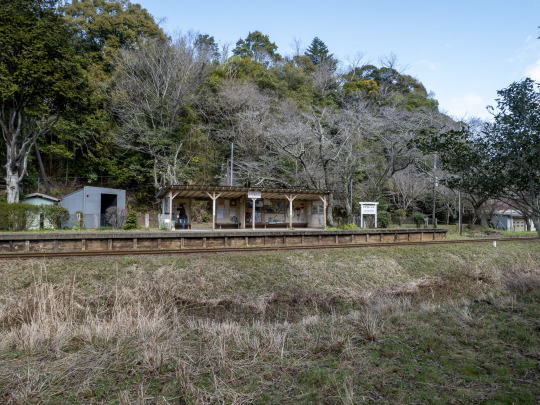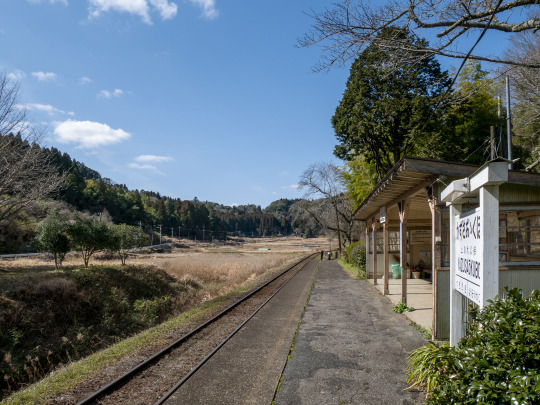#県道
Photo

「秋田県道42号 男鹿八竜線」国道101号と国道7号を結ぶ主要地方道。八郎潟干拓地の西部を縦に貫く、大潟村内唯一の縦の道。 そのほとんどが直線で構成された道で流すのに気持ちがいいが面白みにかける、いや全然面白くない道。夏は緑が秋は黄金色が眩しい。 #秋田県 #akita #大潟村 #ogata #八郎潟 #八郎潟干拓地 #秋田県道 #県道 #主要地方道 #r42 #秋田県道42号男鹿八竜線 #男鹿八竜線 #道スタグラム #道行く路 (大潟村) https://www.instagram.com/p/CqCqkHfvekj/?igshid=NGJjMDIxMWI=
2 notes
·
View notes
Photo
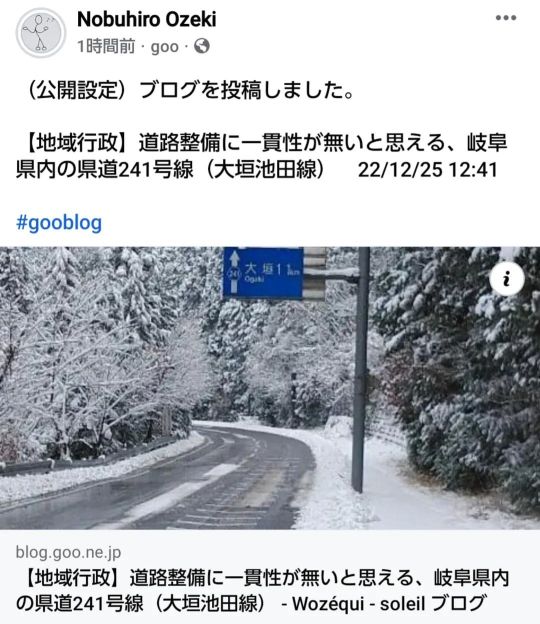
Facebookより (公開設定)ブログを投稿しました。 【地域行政】道路整備に一貫性が無いと思える、岐阜県内の県道241号線(大垣池田線) 22/12/25 12:41 ブログ中のハッシュタグは、 #地域行政 #道路整備 #岐阜県 #県道 #241号線 #大垣池田線 #池田町 #大垣市 #日記 https://www.instagram.com/p/Cmk9MITv-Mn/?igshid=NGJjMDIxMWI=
0 notes
Text
浦戸大橋/高知県高知市【ウォーキング】種崎海水浴場〜種崎渡船場〜浦戸大橋〜浦戸城趾
浦戸大橋とは
浦戸大橋(うらどおおはし)は、高知県高知市にある橋だ。
1972年完成で、高さ50m、全長1480mと完成当時は画期的な橋だった。
浦戸大橋は浦戸湾にかかる延長1,480mの橋です。
橋脚のスパンが200mを超え、建設当時は画期的なものでした。
毎年2月、1万人以上のランナーが走る42.195kmの龍馬マラソンの最大の
難所で、かつ絶景のスポットとしても認知されてきています。
③浦浦戸大橋 から引用
浦戸大橋
高知県高知市
(more…)
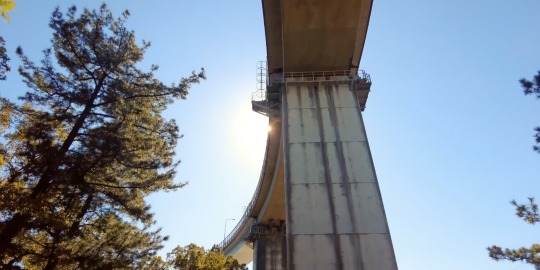
View On WordPress
0 notes
Text
埼玉県
Japanese Prefectures: Kantō - Saitama
都道府県 (とどうふけん) - Prefectures of Japan
Learning the kanji and a little bit about each of Japan’s 47 prefectures!
Kanji・漢字
埼 さき、さい、みさき、キ cape, spit, promontory
玉 たま、~だま、ギョク jewel, jade; ball
県 ケン prefecture
関東 かんとう Kanto, region consisting of Tokyo and surrounding prefectures
Prefectural Capital (県庁所在地) : Saitama City (さいたま市)
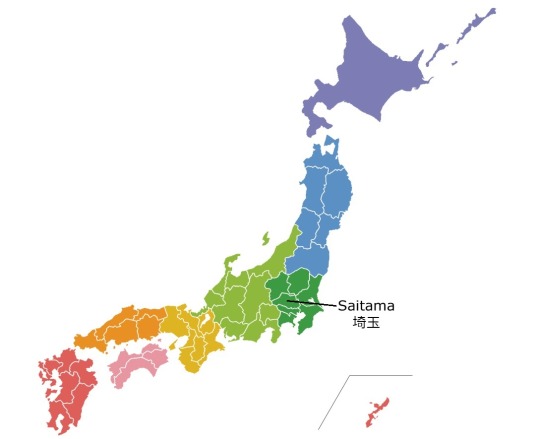
Saitama is Tokyo's neighbor to the north. Much of southeastern Saitama is considered a suburb of Tokyo, but the western parts are mostly rural with mountainous forested areas, and include a castle town and the Chichibu-Tama-Kai National Park. Saitama has historically been a fertile agricultural region and is currently the major food supplier for the metropolitan area of Greater Tokyo. Some of the first currency in Japan came from copper discovered in the Chichibu area in the 8th century. Saitama's central location has made it a historical hub for transportation to all parts of Eastern Japan, and the modern radial roads and railroad system are designed for ease of transportation to all parts of Japan. Saitama is also the backdrop to the famous Miyazaki Hayao (Studio Ghibli) film "My Neighbor Totoro."
Recommended Tourist Spot・おすすめ観光スポット
Kawagoe - 川越

Kawagoe
The Edo-period castle town of Kawagoe is also known as Ko-edo (小江戸 or "Little Edo") because of its many traditional buildings dating from the Edo period. The streets have been maintained as-is since the Edo period (1603-1867). The weekends are the most popular times for visitors to gather here and experience the atmosphere, shops, and popular seasonal events. In the third week of October, the Kawagoe Festival is held with a parade of traditional ornate floats and a musical competition.
The Warehouse District is lined with old earthen storehouses, which are unique two-story buildings that have remained unchanged since the days when the city was a major transportation and commerce hub for Eastern Japan. The Toki no Kane, or "Bell of Time," has marked time for the town for centuries, and continues to ring four times daily. Candy Street is a street lined with stores where traditional Japanese sweets are made in the old-fashioned way.
For more recent history, the Taisho-Roman Street has old, retro western-style buildings from the Taisho and Showa areas. There are also no overhead power lines, which makes this a popular spot to shoot many Japanese period films set in these eras.
There are severable notable temples and shrines in Kawagoe, especially Kitain Temple, which was built over 1,000 years ago. This temple has 538 stone statues of Buddha, each with its own face and unique posture. No two statues look alike, and the popular belief is that there is a statue to resemble any visitor to the temple. Kawagoe Hikawa-jinja Shrine is a Shinto shrine dating back to the 6th century that boasts a torii shrine gate that is 15 metres tall. Kawagoe Kumano-jinja Shrine has fortunes, lucky charms, and also boasts the "stepping health road," which is a path to walk barefoot to stimulate the acupuncture points on the soles of your feet for health benefits.
Regional Cuisine - 郷土料理
Miso Potato - 味噌ポテト

Miso Potato (source)
Famous in the Chichibu region of Saitama, miso potatoes are a well-known winter treat in the area. This dish is similar to a baked potato covered in sweet miso sauce and is traditionally from the rural areas in the mountainous part of the prefecture. It is now a popular street stall snack that combines the sweet and savoury miso flavours with the earthy baked potato texture.
Saitama Dialect・Saitama-ben・埼玉弁
1. むじっけー mujikkee cute
むじっけー猫だね。
(mujikkee neko da ne)
Standard Japanese: かわいい猫だね。
(kawaii neko da ne)
English: What a cute cat.
2. ああみぃ aahmii no good, can't do it (also, ああみ, aahmi)
ごめん、明日ああみぃ。
(gomen, ashita aahmii)
Standard Japanese: ごめん、明日行けない。
(gomen, ashita ikenai)
or ごめん、明日はダメ。
(gomen, ashita wa dame)
English: Sorry, I can't go tomorrow.
or Sorry, tomorrow is no good.
3. かみぎっちょ gamigiccho lizard
庭のすみっこにかまぎっちょがいたで。
(niwa no sumikko ni kamagiccho ga itade)
Standard Japanese: 庭の隅にとかげがいたよ。
(niwa no sumi ni tokage ga ita yo)
English: There was a lizard in the corner of the garden.
4. うちゃる ucharu to throw away
そこにうちゃるなよ。
(soko ni ucharu na yo)
Standard Japanese: そこに捨てるなよ。
(soko ni suteru na yo)
English: Don't throw that away there.
5. こわい ~kowai hard
このおせんべいこわい。
(kono osenbei kowai)
Standard Japanese: このおせんべい硬い。
(kono senbei katai)
English: This senbei is hard.
*Note: senbei is a Japanese rice cracker
6. えらい erai a lot
今日はえらい食べるな。
(kyou wa erai taberu na)
Standard Japanese: 今日はたくさん食べるな。
(kyou wa takusan taberu na)
English: Don't eat a lot today.
#japanese prefectures#日本語#japanese#japanese language#japanese langblr#langblr#studyblr#都道府県#埼玉県#saitama
63 notes
·
View notes
Text

2023年12月29日14:25
73 notes
·
View notes
Photo
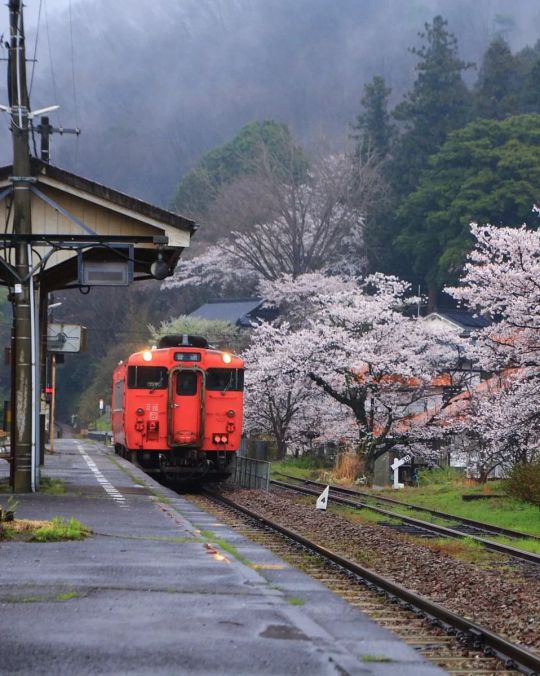
【広島県】芸備線🚃志和地駅 . 素晴らしい風景をずっと独り占めでした . (2021/03/28撮影) . #芸備線 #志和地駅 #桜 #志和地 #三次市 #三次 #広島県 #広島県三次市 #ローカル線 #鉄道と桜 (志和地駅) https://www.instagram.com/p/CpASw_Hvh5M/?igshid=NGJjMDIxMWI=
335 notes
·
View notes
Text
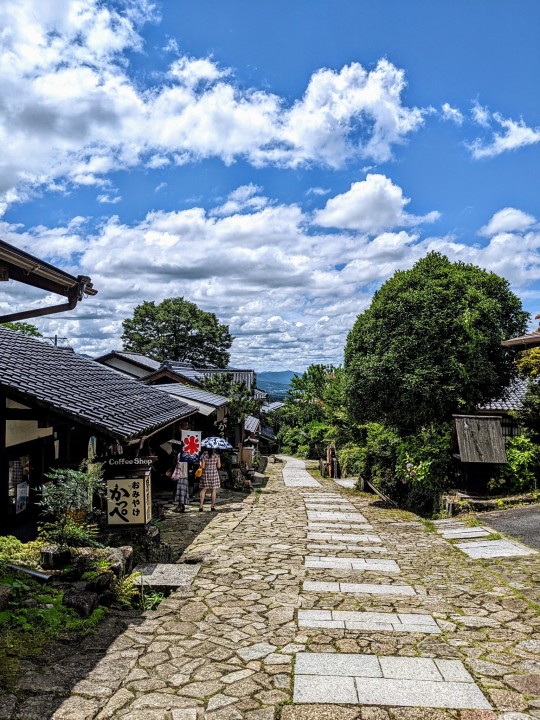




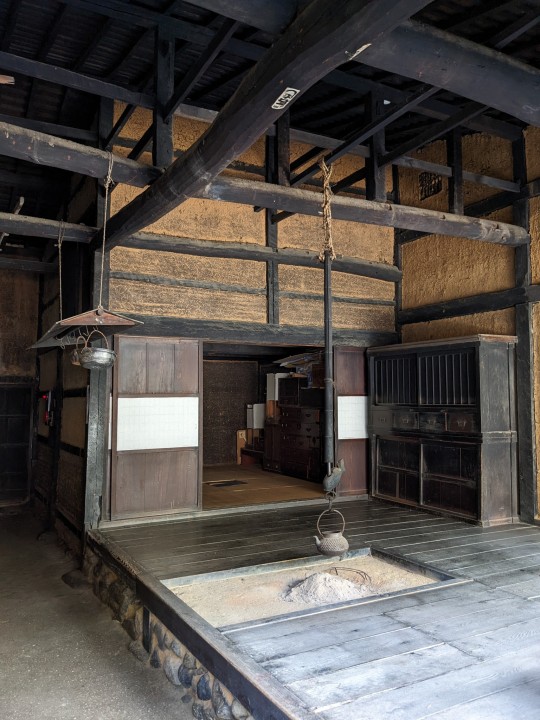
560 notes
·
View notes
Text
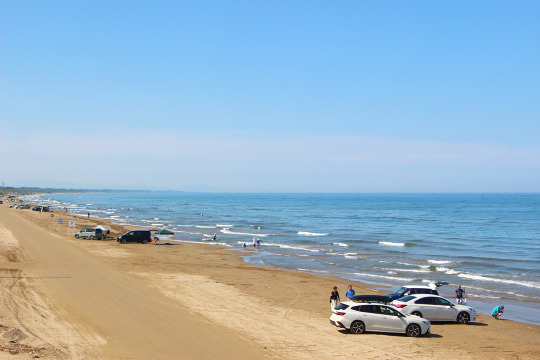





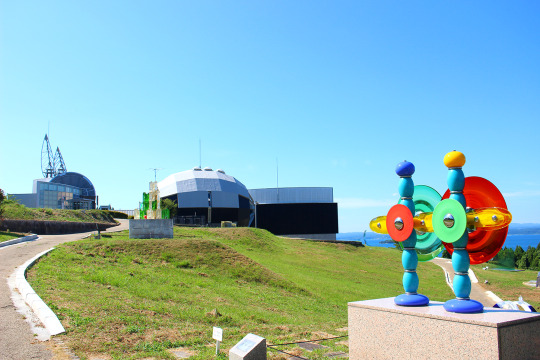

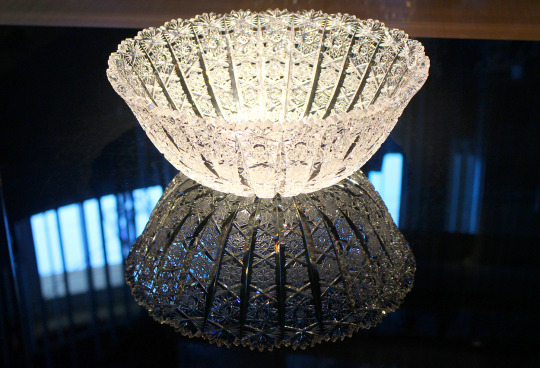
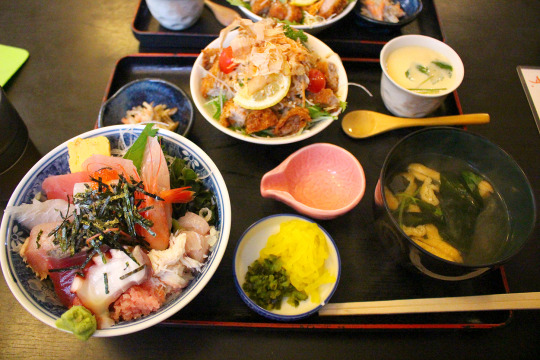
20230730(sun)
北陸自動車道金沢東ICを降りて、かほく市の方へ進み日本海の海岸線に沿って走る自動車専用道路「のと里山海道」を北上。
午前中は石川県羽咋(hakui)市の「千里浜(chirihama)なぎさドライブウェイ」と「宇宙科学博物館コスモアイル羽咋」を楽しむ。
昼食は七尾(nanao)市にある「ごはん処一歩」がおすすめと聞いていたので、羽咋市から能登半島を東に横断するように進む。七尾までの街道沿いを走っていると、家々の瓦が以前行った富山の瓦と同じ黒瓦で、夏の日差しを受けて、艶やかな黒が美しかった。
食事は「海せん丼半盛セット」(1,480円)を注文。近くの七尾湾で採れた新鮮な魚を使っているという海せん丼(これでミニだそうです)。この味この値段いうことなし。ちなみに11時30分から開店ですが、この時間に行くと1時間待ちかな。ぼくたちも開店時間後に着いたので、予約後近くにある七尾フィッシャーマンズ・ワーフ能登食祭市場で時間をつぶす。(鰻の蒲焼き、美味しそうやったな)
食事の後は能登島大橋を渡って、石川県能登島ガラス美術館を見学。観光パンフを見せると、100円の値引き。ちょっと嬉しかった。
こんな夏の日の一日。
#のと里山海道#千里浜なぎさドライブウェイ#宇宙科学博物館コスモアイル羽咋#石川県能登島ガラス美術館#notojima glass art museum#ごはん処一歩#羽咋市#七尾市#七尾フィッシャーマンズ・ワーフ能登食祭市場
65 notes
·
View notes
Text
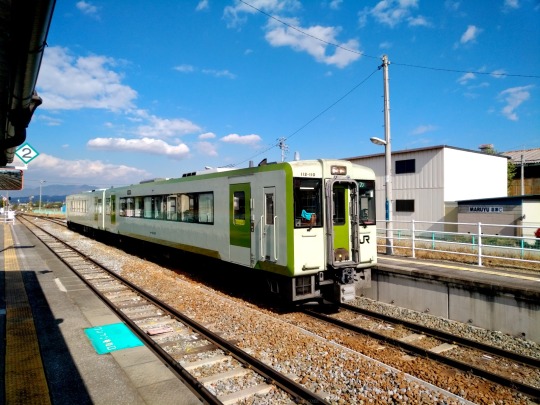
鉄分足りてない方々に捧ぐ
普段鉄道は撮らないけど色が可愛いかった
November 2018
38 notes
·
View notes
Photo

「秋田県道298号 道村大川線」県道54号線と国道7号を結ぶ3桁県道。大潟村を横断する日本のうちの一本。 地下やトンネルを除き地上の最低地を行く(あくまで自分調べ)県道、6枚目のカーブがその地点だ、標高は-5mほど。 #秋田県 #akita #大潟村 #ogata #八郎潟 #八郎潟干拓地 #秋田県道 #県道 #一般県道 #r298 #秋田県道298号 道村大川線 #道村大川線 #日本の極地県道 #日本の最低地 #最低地 #道スタグラム #道行く路 (大潟村) https://www.instagram.com/p/CrC8v9tvrFo/?igshid=NGJjMDIxMWI=
1 note
·
View note
Text

Nakasendo Tsumagojuk in Nagiso Town, Nagano Prefecture
長野県南木曽町の中山道 妻籠宿
#japan#japanese#japan travel#japan vacation#japan photos#長野県#南木曽町#中山道#妻籠宿#photografy#photo#photoshoot#my photos#photograpy#film photography#photoblog#photoshop#photograph#photography#original photographers#photographers on tumblr#photooftheday#beautiful photos#photoart
21 notes
·
View notes
Text



因島 お好み焼き 米ちゃん
#お好み焼き#広島#広島県#因島#瀬戸内海#しまなみ海道#okonomiyaki#foodporn#foodie#food#foodphotography#japanesefood#Japan#japantrip#japantravel
30 notes
·
View notes
Photo

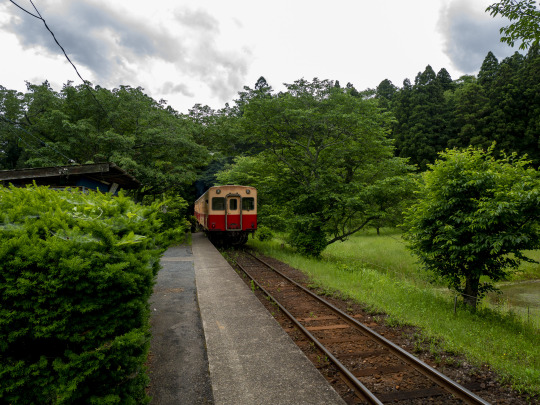


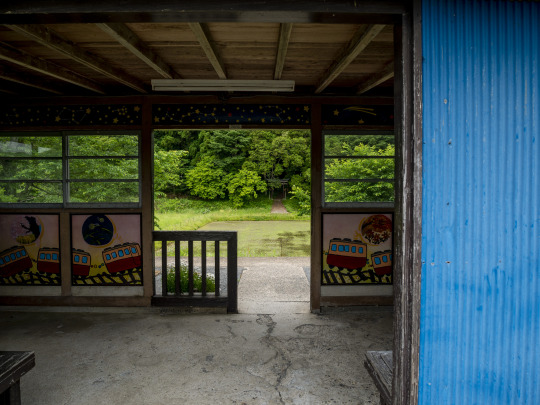

可愛い無人駅②
435 notes
·
View notes
Text
茨城県
Japanese Prefectures: Kantō - Ibaraki
都道府県 (とどうふけん) - Prefectures of Japan
Learning the kanji and a little bit about each of Japan’s 47 prefectures!
Kanji・漢字
茨 いばら、かや、くさぶき、シ、ジ briar, thorn
城 しろ、き、ジョウ castle
県 ケン prefecture
関東 かんとう Kanto, region consisting of Tokyo and surrounding prefectures
Prefectural Capital (県庁所在地) : Mito (水戸市)
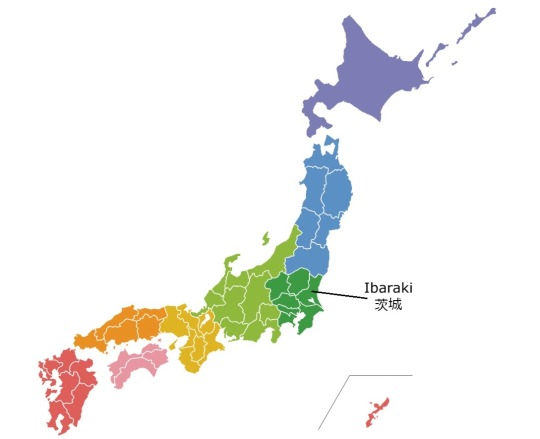
Amidst sprawling fields of beautiful flowers, Ibaraki also hosts Tsukuba Science City, Japan's premier research center and the home of Japan's space agency and numerous museums. Ibaraki is known historically for being the home of the Mito branch of the Tokugawa clan during the Edo Period and has long been associated with notable events in Japanese history. The first Nuclear Energy Research Institute was founded here in 1956. You can see space exhibits, actual space craft, and simulations at Tsukuba Space Center.
Outside of the major cities there are many natural areas to explore in the Suigo-Tsukuba Quasi-national Park. Hitachi Seaside Park is famous in the spring for its carpets of blooming blue nemophila. Kairaku-en is one of the Three Great Gardens of Japan. Mt. Tsukuba is a famous night view spot with a view of the Kanto Plain, including Tokyo Tower and the Tokyo Sky Tree, with a ropeway for convenient access. Ibaraki is also a major producer of natto.
Recommended Tourist Spot・おすすめ観光スポット
Fukuroda Falls (Fukuroda no Taki) - 袋田の滝
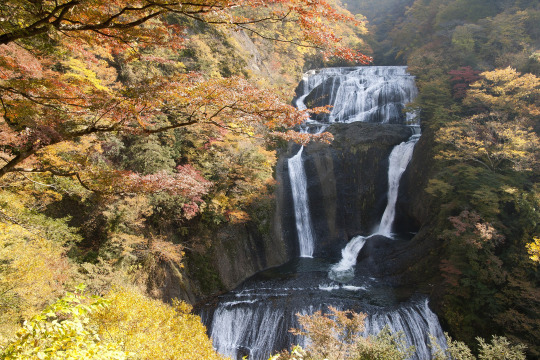
Photo by Own work, CC BY 3.0, Link
One of the three most beautiful waterfalls in Japan, Fukuroda Falls is a 120-meter tall cascading waterfall in northwestern Ibaraki Prefecture in the remote hills of the town of Daigo. It is also on the registered list of the Top 100 Waterfalls of Japan (determined by the Ministry of Environment). These falls are also called the Yodo Falls (Yodo no Taki) because the water stream falls on four large rock faces. It is also said that the renowned monk Saigyo Hoshi greatly praised the falls by saying that you should view the different beauty of the falls in all four (yo) seasons.
They are particularly attractive in early November with the peak autumn foliage as well as peak water flow. There are several different views of the waterfall, and you cannot view it in its entirety all at the same time. Within the Fukuroda Waterfall complex there are neon tunnels and elevators to take you to different levels and viewing platforms. It is said that you will be successful in love if you find a heart in the waterfall. There are also numerous hot springs nearby.
Regional Cuisine - 郷土料理
Monkfish Hot Pot - あんこう鍋

Photo by yosshi / CC BY-SA 2.0
The monkfish (also referred to as angler fish, goosefish, depending on the source I found) is a prized delicacy of Ibaraki and is best eaten fresh. Because these fish are too soft and slimy to cut up on a chopping board, they are prepared using the traditional tsurushi-giri technique, which involves cutting up the fish while suspended from a hook. In Japan, almost all parts of the monkfish are eaten, including fins, skin, gills, liver, stomach, ovaries and flesh—referred to as the “seven tools of the monkfish” in Japanese. The steamed liver is called ankimo and is considered a delicacy that may be eaten alone, or added to the hotpot soup for extra flavor. Anko nabe (monkfish hot pot) is a seasonal favorite consisting of monkfish, vegetables, and flavored broth.
Ibaraki Dialect・Ibaraki-ben・茨城弁
りんごあっけ? ringo akke?
Standard Japanese: りんごありますか? (ringo arimasu ka?)
English: Do you have any apples?
あしにあおなじみできちった ashi ni aonajimi dekichitta
Standard Japanese: 足に青あざができちゃった (ashi ni aoaza ga dekichatta)
English: I have a bruise on my leg
ごじゃっぺなやつだ (gojyappe na yatsu da)
Standard Japanese: いい加減な人; やくにっ立たない人
(iikagen na hito; yaku ni tatanai hito)
English: He's a good-for-nothing person
「行ってもいがっぺ?」 (itte mo igappe?)
「来たらいがっぺ」 (kitara igappe)
Standard Japanese: 「行ってもいいですか?」 「来てもいいですよ」
("itte mo ii desu ka?" "kite mo ii desu yo")
English: "Is it alright if I come?" "Yes please come"
あれは犬だっぺ (are wa inu dappe)
Standard Japanese: あれは犬です (are wa inu desu)
English: That is a dog
いがい車だな (igai kuruma da na)
Standard Japanese: 大きい車ですね (ookii kuruma desu ne)
English: That's a big car, isn't it
杖がおっちょれる (tsue ga occhoreru)
Standard Japanese: 杖が折れた (tsue ga oreta)
English: The cane broke in half
カラスををおっとばす (hato o ottobasu)
Standard Japanese: カラスを追い払う (hato o oiharau)
English: Drive away the crows
その日、大事? (sono hi, daiji?)
Standard Japanese: その日、大丈夫? (sono hi, daijyoubu?)
English: Is that day ok for you?
#japanese prefectures#日本語#japanese#japanese language#japanese langblr#langblr#studyblr#都道府県#茨城県#ibaraki
75 notes
·
View notes
